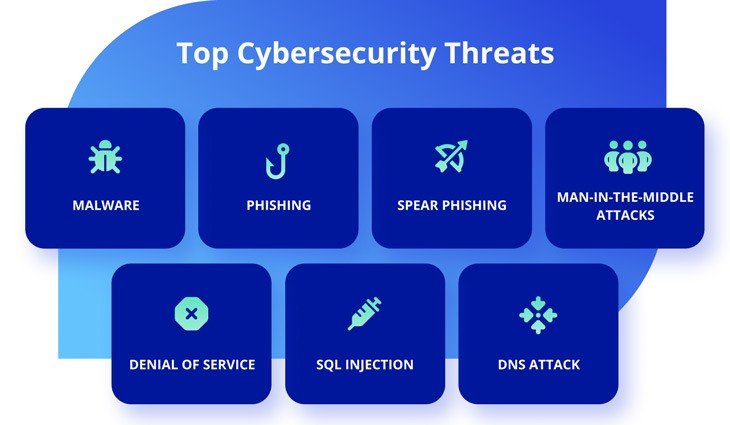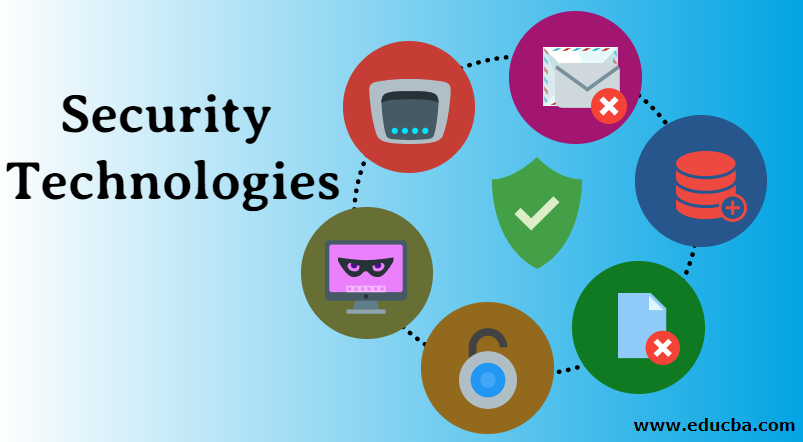Web security protects networks, servers, and computer systems from damage to or the theft of software, hardware, or data. It includes defending computer systems from misdirecting or disrupting the services they are designed to provide.
Web security is synonymous with cybersecurity and also covers website security, which involves protecting websites from attacks. It includes cloud security and web application security, which defend cloud services and web-based applications, respectively. Website protection technology has enabled enhanced protection mechanisms, such as the protection of a virtual private network (VPN), which also falls under the web security umbrella.
Web security is crucial to the smooth operation of any business that uses computers. If a website is hacked or hackers are able to manipulate your systems or software, your website—and even your entire network—can be brought down, halting business operations. Businesses need to account for the factors that go into web security and threat prevention.

Importance of Web Security
Web security is typically not comprised of a single solution. Rather, it’s many tools working together, which all need to be configured, managed, updated and patched.
An advanced persistent threat is difficult for administrators to detect. It’s also extremely difficult to contain because it creates backdoors and spreads across the network. This makes it almost impossible to completely eradicate. Web security must be able to proactively find and contain these threats before they spread.
Cybersecurity infrastructure is not the only way to keep your organization safe. Simple strategies are also effective for stopping threats. Make sure that users must learn these strategies so they don’t unintentionally expose data or become an easy target for attackers.
Common web security strategies:
- Strong passwords. Users should be required to create complex passwords and frequently change them. Strong passwords reduce an attacker’s window of opportunity after a phishing attack or when credentials are stolen.
- Multifactor authentication . An MFA system adds an extra layer of security. It works by sending a personal identification number (PIN) to a user’s smartphone or email during the authentication process. Without the PIN an attacker cannot authenticate.
- Virtual private network . Every remote worker should connect to the internal network through a virtual private network. A VPN encrypts traffic between devices and the network to keep data safe from man-in-the-middle attacks.
What Does Web Security Protect Against?
Web security can’t stop every attack. But it can block many common online threats. Think of it as an added layer of protection that strengthens your overall security posture.
Here are a few threats stopped by web security:
- Malware. Web security uses antivirus software and other cybersecurity tools to block malware.
- Data theft. Web security will prevent unauthorized users from exfiltrating sensitive information to outside servers.
- Phishing. Most data breaches start with a malicious phishing email. Web security filters these emails so they don’t reach users’ inboxes.
- Session hijacking. One way a cyber attacker can hijack a user session is by stealing the HTTP cookies necessary to maintain the session. Web security includes web filtering and protection to prevent these attacks.
- Malicious redirects. Websites with open URL redirects can steal user credentials and other sensitive information. Web security stops these attacks by blocking redirection to known attack sites.
- Spam. Storage space is expensive, and spam email can quickly fill up network resources. Web security blocks these emails from users’ inboxes.
- Advanced persistent threats. Sophisticated attacks can only be stopped by multiple layers of security. Web security helps you detect and stop malicious activity early.
- Shadow IT. If a device is not authorized, it should not be allowed to connect to the network. Good web security will block these devices from accessing sensitive data or resources.
What is a Security Threat?
A threat is nothing but a possible event that can damage and harm an information system. A security Threat is defined as a risk that, can potentially harm Computer systems & organizations. Whenever an individual or an organization creates a website, they are vulnerable to security attacks. Security attacks are mainly aimed at stealing altering or destroying a piece of personal and confidential information, stealing the hard drive space, and illegally accessing passwords. So whenever the website you created is vulnerable to security attacks then the attacks are going to steal your data alter your data destroy your personal information see your confidential information and also it accessing your password.
SQL injection
SQL injection is a technique an attacker uses to exploit vulnerabilities in a database’s search process. With SQL injection, an attacker can obtain access to privileged information, create user permissions, modify permissions, or execute plans to change, manipulate, or destroy data. In this way, a hacker can capture sensitive information or alter it to interrupt or control the functioning of a crucial system.
Cross-site scripting
Cross-site scripting (XSS) refers to a vulnerability that gives hackers an opening to insert client-side scripts inside a page. This is then used to gain access to critical data directly. XSS can also be used by a hacker to pretend to be another user or to fool a user into disclosing crucial information.
Remote file inclusion
With remote file inclusion, an attacker references external scripts using vulnerabilities in a web application. The attacker can then attempt to use the referencing function within an application to upload malware. These types of malware are also referred to as backdoor shells. All this is done from a different Uniform Resource Locator (URL) within a separate domain.
Password breach
Breaching a user’s password is a common technique to gain access to web resources. In many cases, the hacker will use a password that the user or administrator had used to log in to another site for which the hacker has a list of login credentials.
In other cases, hackers use a technique called password spraying, in which they use common passwords like “12345678” or “password123,” and try them out one after the other until they gain access. There are several other techniques like keyloggers or simply finding your password written down and using it.
Data breach
A data breach refers to when confidential or sensitive information gets exposed. Data breaches can sometimes happen by accident, but they are often perpetrated by hackers with the intention of using or selling the data.
Code injection
Code injection involves an attacker using an input validation vulnerability in a computer’s software system to introduce and run malicious code. This code then proceeds to make changes to how the software and computer work.

Web Security Solutions:
Web security is a multifaceted challenge requiring a layered approach. Here’s a breakdown of key solutions and strategies:
Fundamental Security Measures
- Strong Passwords and Authentication:
- Regular Software Updates:
- Keep operating systems, applications, and plugins up-to-date with the latest security patches.
- Firewall:
- Protect your network from unauthorized access.
- Intrusion Detection and Prevention Systems (IDPS):
- Web Application Firewalls (WAF):
- Protect web applications from attacks like SQL injection and cross-site scripting (XSS).
Advanced Security Solutions
- Secure Web Gateways (SWGs):
- Filter web traffic, block malicious websites, and prevent data loss.
- Content Delivery Networks (CDNs):
- Improve website performance and security by distributing content across multiple servers.
- Encryption:
- Protect data transmission with HTTPS.
- Data Loss Prevention (DLP):
- Prevent sensitive data from being leaked.
- Security Information and Event Management (SIEM):
- Centralize log management and threat detection.
- Incident Response Plan:
- Prepare for and respond effectively to security breaches.
Technologies for Web Security
Various technologies are available to help companies achieve web security, including web application firewalls (WAFs), security or vulnerability scanners, password-cracking tools, fuzzing tools, black box testing tools, and white box testing tools.
Web application firewalls (WAFs)
A web application firewall (WAF) protects web applications by monitoring and filtering internet traffic that flows between an application and the internet. In this way, a WAF works as a secure web gateway (SWG). It provides protection for web applications against attacks, including cross-site scripting, file inclusion, cross-site forgery, Structured Query Language (SQL) injection, and other threats.
In the Open Systems Interconnection (OSI) model, a WAF works within Layer 7. Even though it works against many internet threats, it is not intended to defend against all kinds of threats. A WAF often works within a suite of protective tools meant to defend a network, computer, or application. Learn more about what is WAF.
Security or vulnerability scanners
Vulnerability scanners refer to tools that organizations use to automatically examine their systems, networks, and applications to check for weaknesses in their security. Once a vulnerability scanner has finished checking the target system, security teams can use the results to address critical vulnerabilities.
Password-cracking tools
With password-cracking tools, you can still gain access to your system even if you have lost or forgotten your password. This helps maintain web security for business in a couple of different ways.
First, if you need to reset your password but cannot remember the original one, a password-cracking tool allows you to gain access. Second, if someone has penetrated your system and changed the password, you can use a password-cracking tool to get back in and change the password to something harder to figure out, thereby regaining control.
Fuzzing tools
Fuzzing tools are used to check software, networks, or operating systems for coding errors that may result in security weaknesses. Once an error is found, a fuzzer pinpoints the potential causes of the problem.
Fuzzing tools can be valuable at various stages of the software development process as well. Whether implemented during initial testing, before final deployment, or somewhere in between, developers can use them to gain insights into vulnerabilities so they can be addressed.
Black box testing tools
Black box testing refers to checking a system without any knowledge regarding how it works. The only thing the tester sees is the input they key in and the resulting output. In many ways, the tester has only as much knowledge of the system as a random user would have.
Black box testing tools are used to see how the system responds to unexpected actions taken by users. They can help security personnel inspect response times and detect issues in software performance and whether or not the system is reliable.
White box testing tools
Black box testing happens from the user’s point of view, without any insight into the code itself, while white box testing gives you a look inside how the software works. With white box testing, the design, coding, and internal structure of software is tested to enhance its design, as well as ensure the smooth flow of data into and out of the application.

Best Defense Strategies for Developer for Web Security
Resource assignment
With a resource assignment strategy, a developer designates the needed resources in a way that lets the developer know about new issues as they arise. With constant updates, the developer can identify and take action against threats before security actually gets breached.
Web scanning
Web scanning involves using an application to crawl a website in search for vulnerabilities that can leave it open to a bot, spyware, rootkit, Trojan horse, or distributed denial-of-service (DDoS) attack. The scanner checks all the pages on the website, forming a diagram complete with a structure representing the layout of the site. It then systematically checks the entire site for potential weaknesses.
Protection Provided by Web Security
Web security protects an organization against some of the most common internet threats on the landscape.
Stolen data
Attackers often try to steal data to gain access to payment systems, email accounts, or other sites or applications that require authentication. In some cases, the hacker will use the data themselves, but they may also sell it to someone else.
Phishing schemes
Hackers use phishing to fool users into disclosing sensitive information. They may do this using emails or by setting up fake websites that look real. The user then enters sensitive data into the fake website, which makes it available for the attacker.
Session hijacking
With session hijacking, an attacker will take control of a user’s session and then do things on a site in the user’s name. Because it appears that the user is the one performing the actions, the attacker can hide their identity, potentially getting away with whatever illicit activity they engaged in while on the site.
Malicious redirects
Malicious redirects involve sending a user to a malicious site they never intended to visit. Once on this site, the user’s computer can be infected with malware.
SEO spam
In a search engine optimization (SEO) spam attack, abnormal links, comments, or pages are put on a site by attackers to distract visitors or cause them to visit malicious sites.
Relationship between web security and privacy
Security and privacy are distinct yet closely related topics. It is worth knowing the differences between the two and how they relate.
- Security is the act of keeping private data and systems protected against unauthorized access. This includes both company (internal) data and user and partner (external) data.
- Privacy refers to the act of giving users control over how their data is collected, stored, and used, while also ensuring that it is not used irresponsibly. For example, you should let your users know what data you are collecting from them, the parties with whom it will be shared, and how it will be used. Users must be given a chance to consent to your privacy policy, have access to their data you store, and delete it if they choose to.
Good security is essential for good privacy. You could follow all the advice listed in our Privacy on the web guide, but acting with integrity and having a robust privacy policy are futile if your site is not secure and attackers can just steal data anyway.
Challenges in Web Security
Threats constantly evolve to bypass the latest cybersecurity protections. That’s why even the best cybersecurity strategy cannot completely eliminate risk. And it’s also why multi-layered web security is so important.
Administrators have traditionally deployed on-premises infrastructure to safeguard the enterprise from cybersecurity threats, including:
- Malicious websites
- Credential theft
- Social engineering
- Insider threats
- Website vulnerabilities
- Phishing emails
- Malware
The drawback of on-premises infrastructure is that it requires constant monitoring, patching and updates. Recently, administrators have begun hosting infrastructure in the cloud to reduce overhead. The benefits of migrating to the cloud are often worth the risk. But administrators should be aware of the new challenges so they can implement the right tools to avoid a compromise.
While the cloud offers many benefits, it also introduces new vulnerabilities—especially if administrators aren’t familiar with configuring and managing cloud resources. In fact, cloud misconfigurations in the cloud are a primary factor in vulnerabilities. Administrators must also properly configure monitoring and logging tools to stay compliant and detect ongoing attacks in the cloud.
Best Practices
- Employee Training: Educate employees about security best practices.
- Regular Security Audits: Identify vulnerabilities and weaknesses.
- Backup and Recovery: Protect data from loss or corruption.
- Patch Management: Keep systems updated with the latest security patches.
- Monitoring and Analysis: Continuously monitor network and application activity.
Conclusion
Web security is critical for protecting web applications and data from malicious attacks and unauthorized access. It is critical to implement precautions such as updated software, understanding of SQL injection and cross-site scripting, proper error handling, extensive data validation, and strong password restrictions. These methods assure the integrity, confidentiality, and availability of information, protecting both users and organizations from security risks.
FAQs
Web security refers to protecting networks and computer systems from damage to or the theft of software, hardware, or data. It also includes protecting computer systems from misdirecting or disrupting the services they are designed to provide. Given today’s digital environment, maintaining a high level of security is paramount.
Web security maintains the smooth operation of any business that uses computers and prevents hackers and malware from manipulating your systems, software, or network.
Web security threats involve malicious people and organizations, as well as the tools they use to leverage the internet in an attempt to infiltrate your network or devices.
